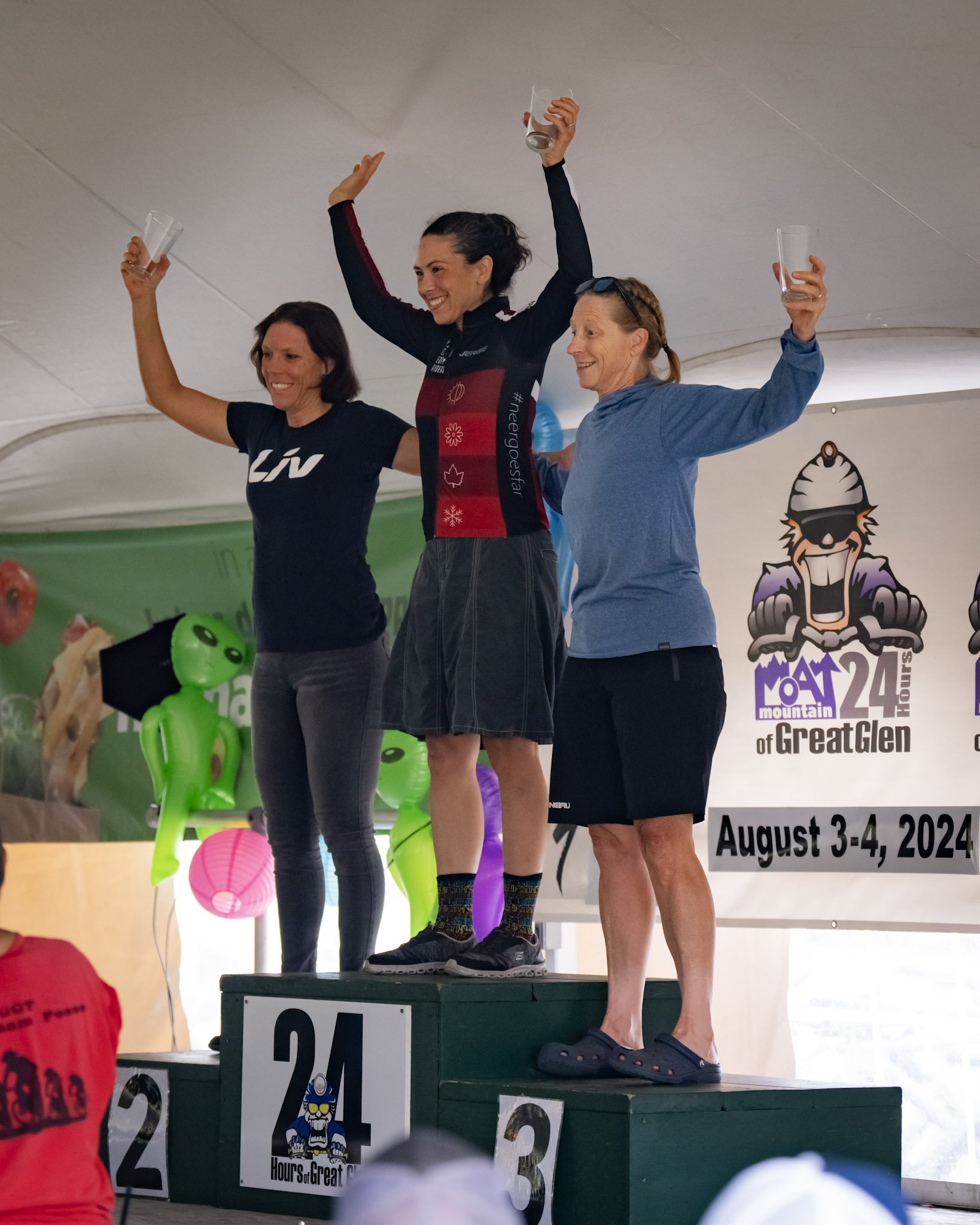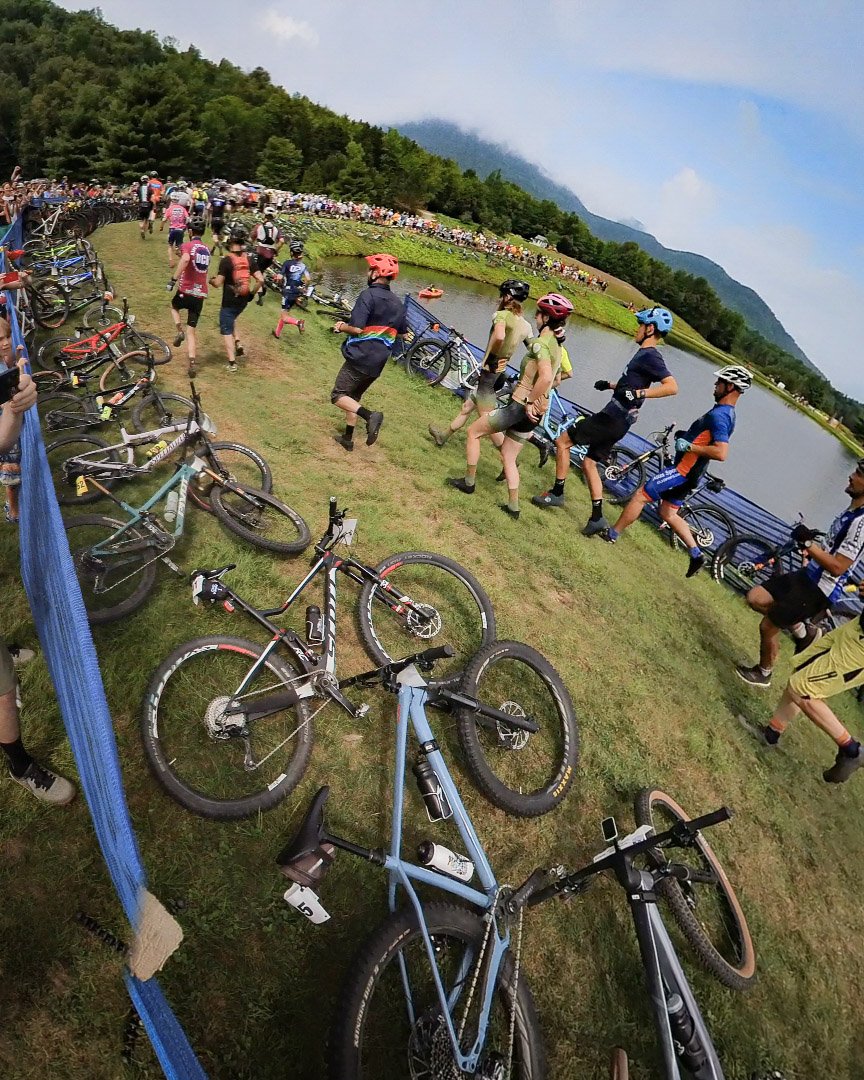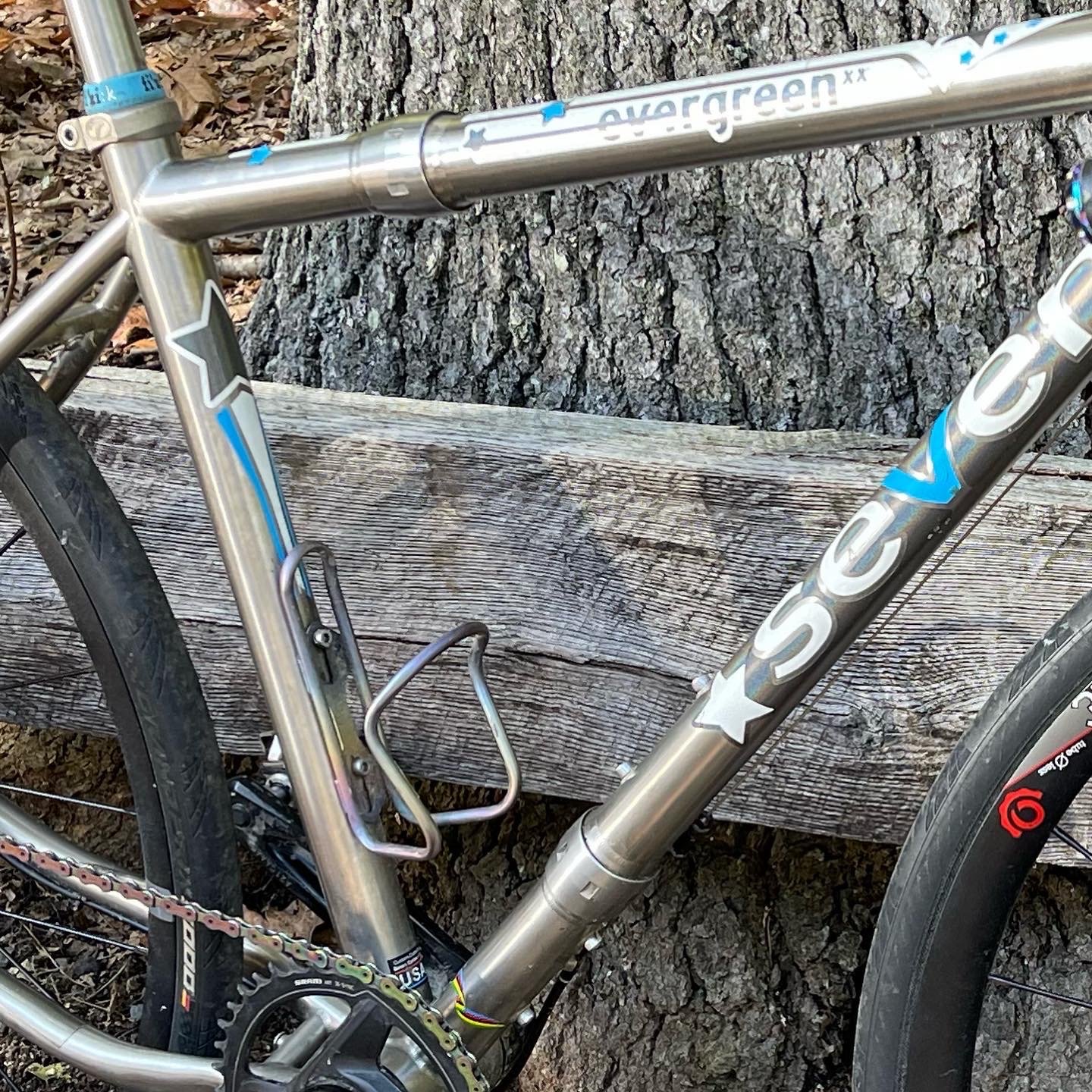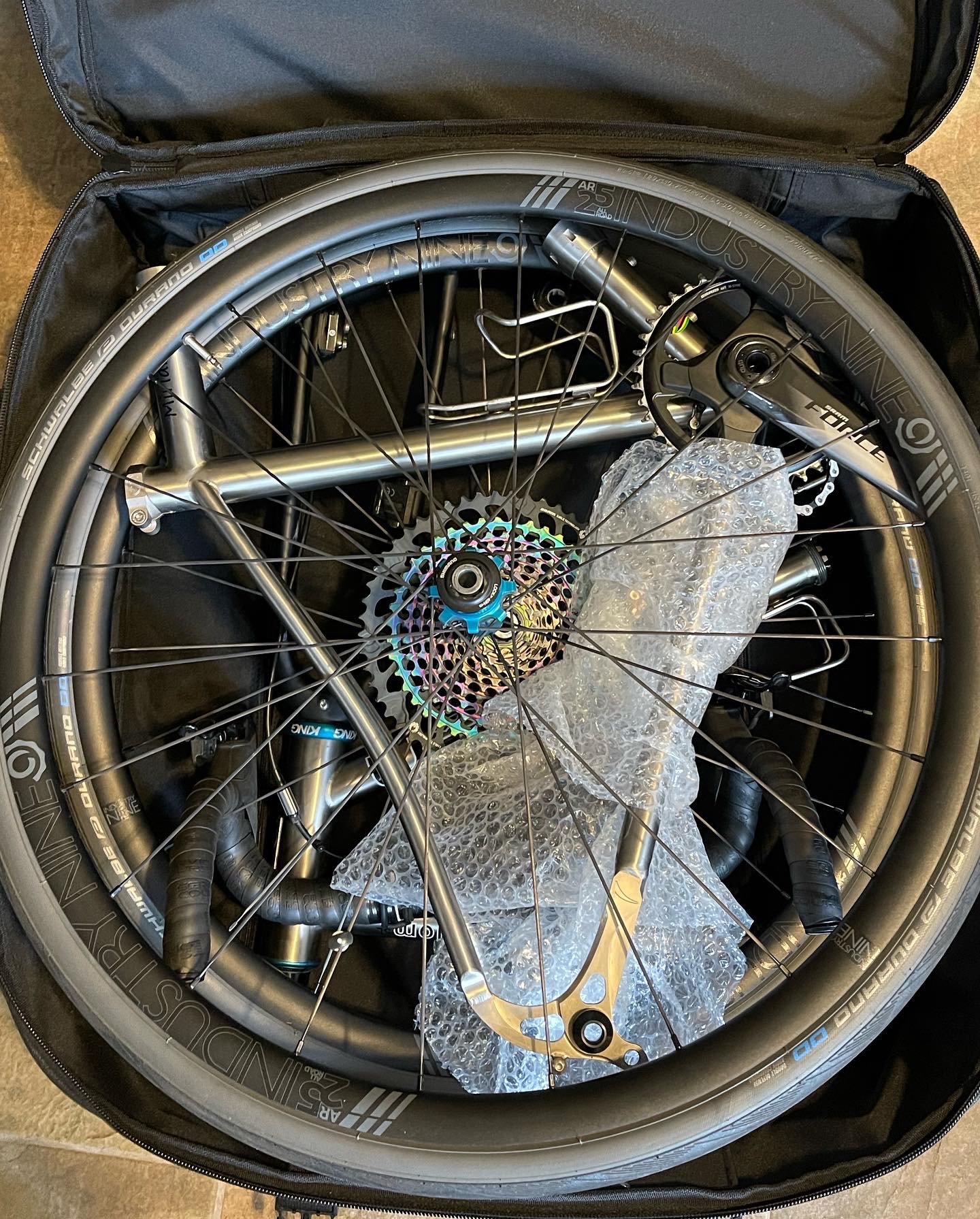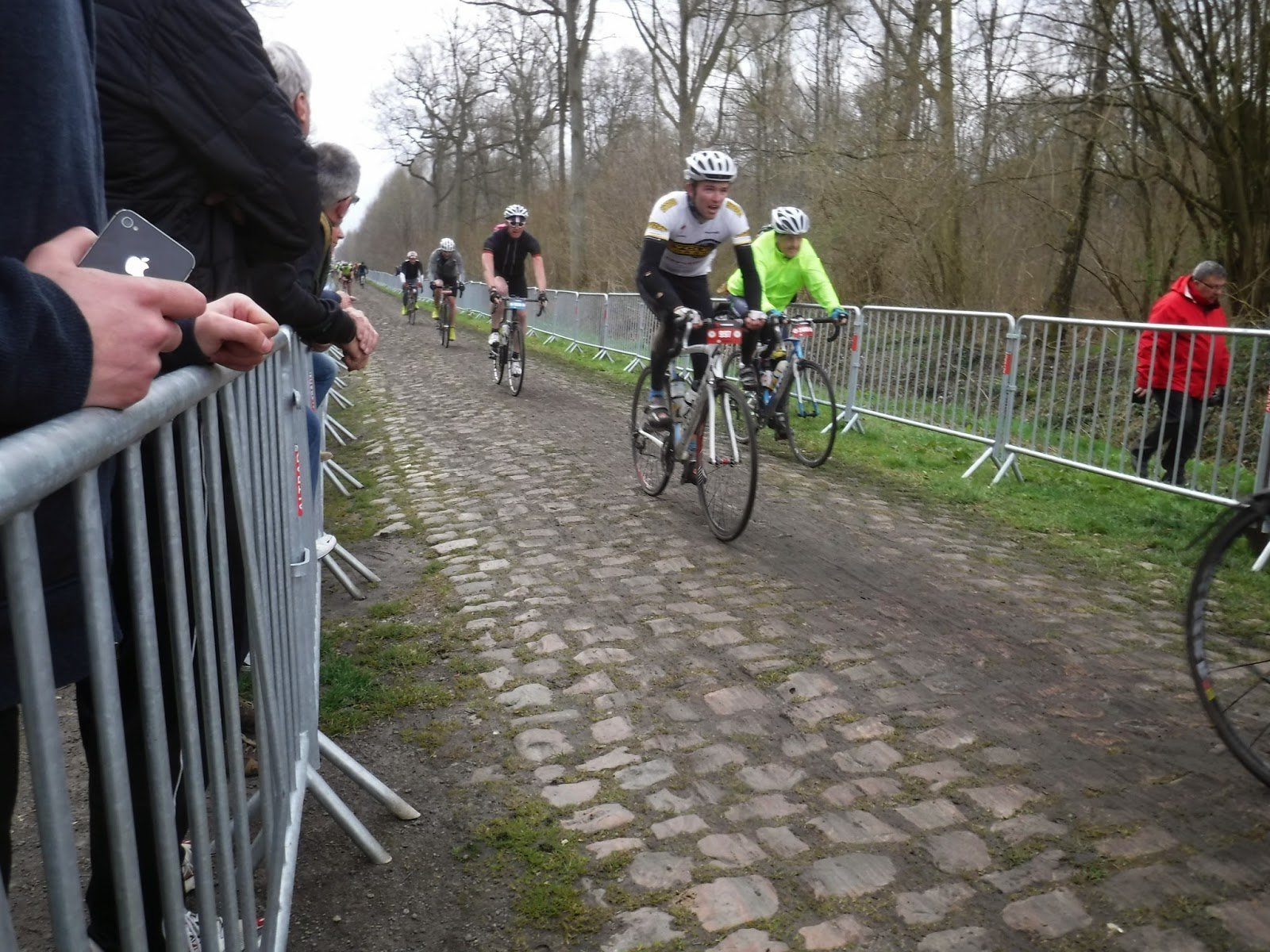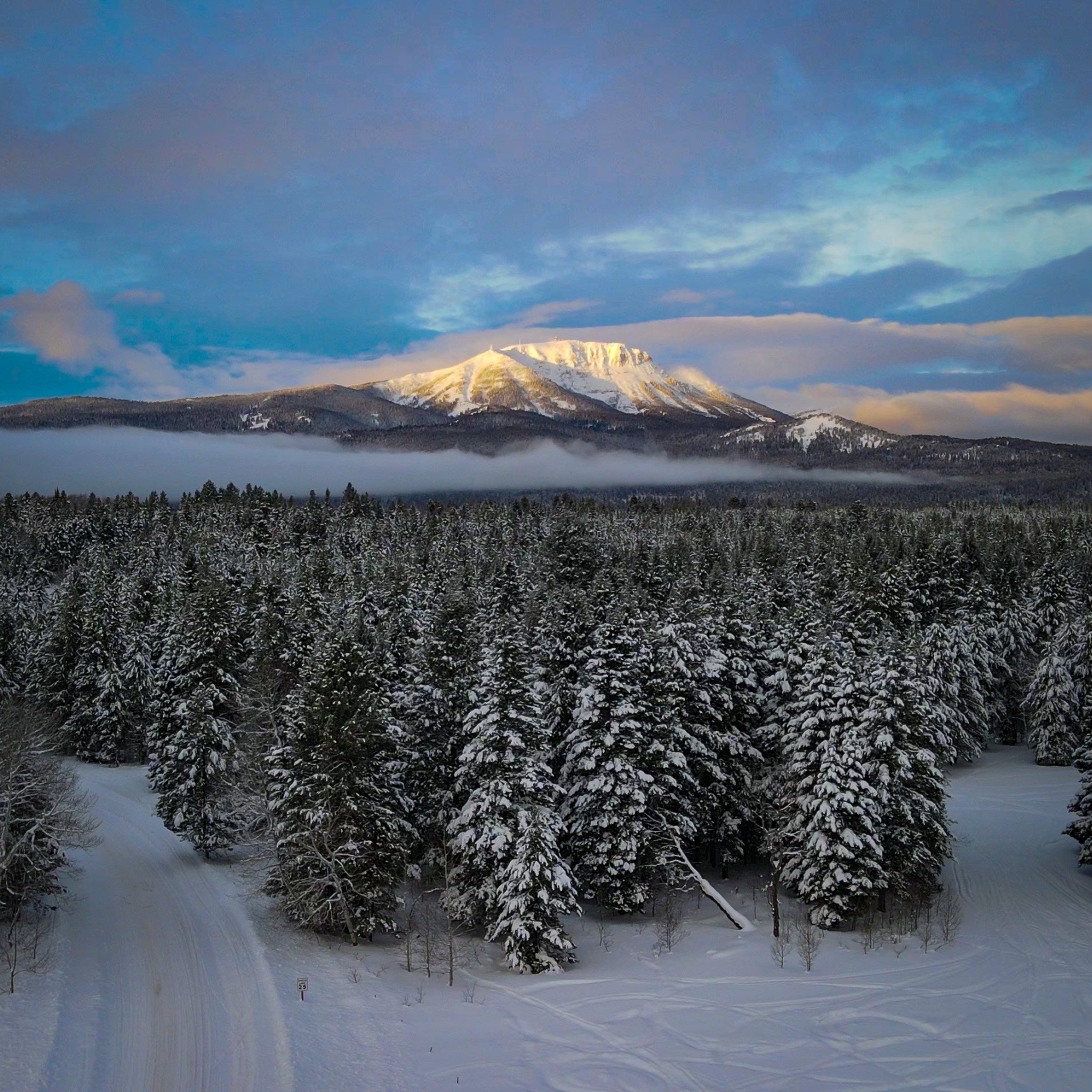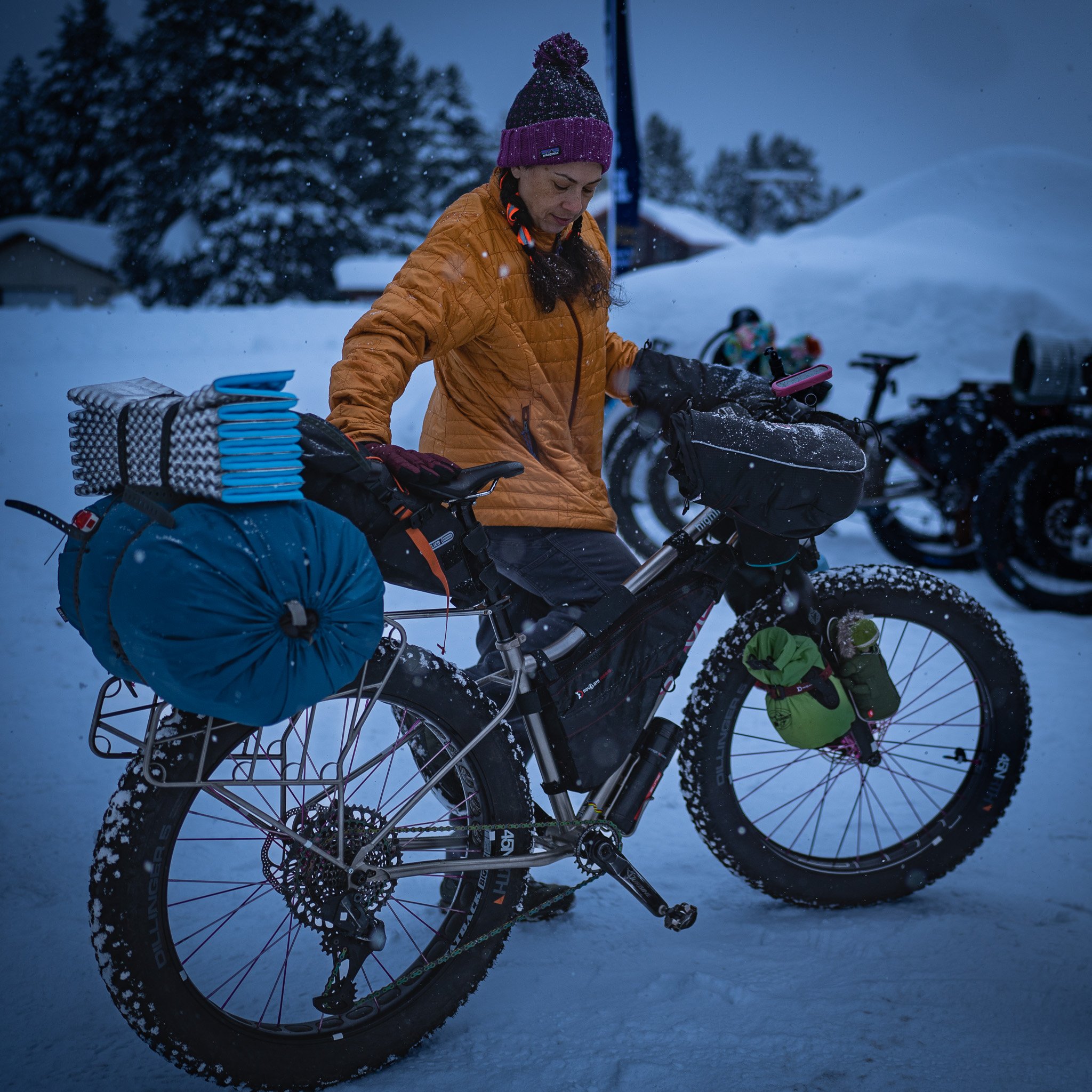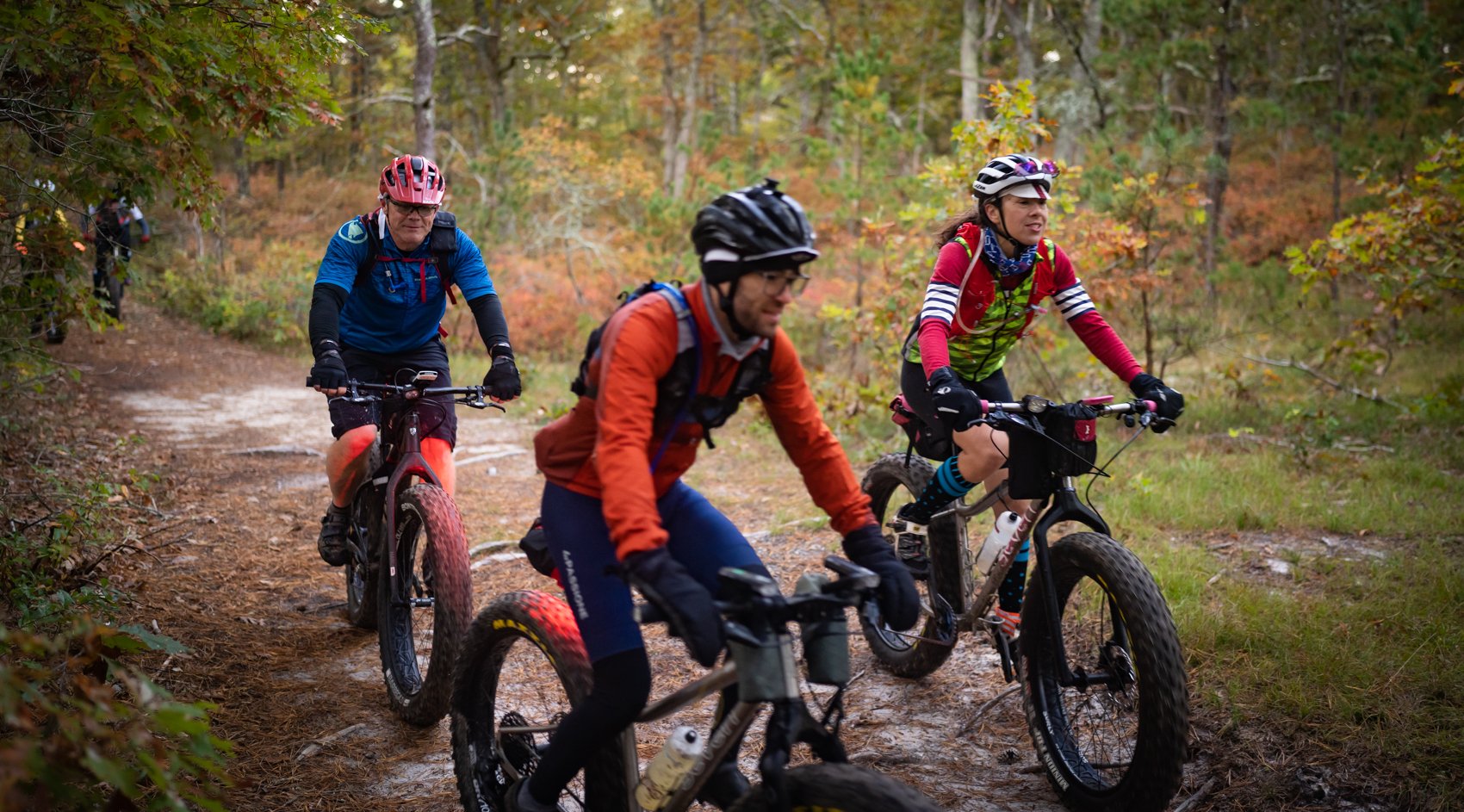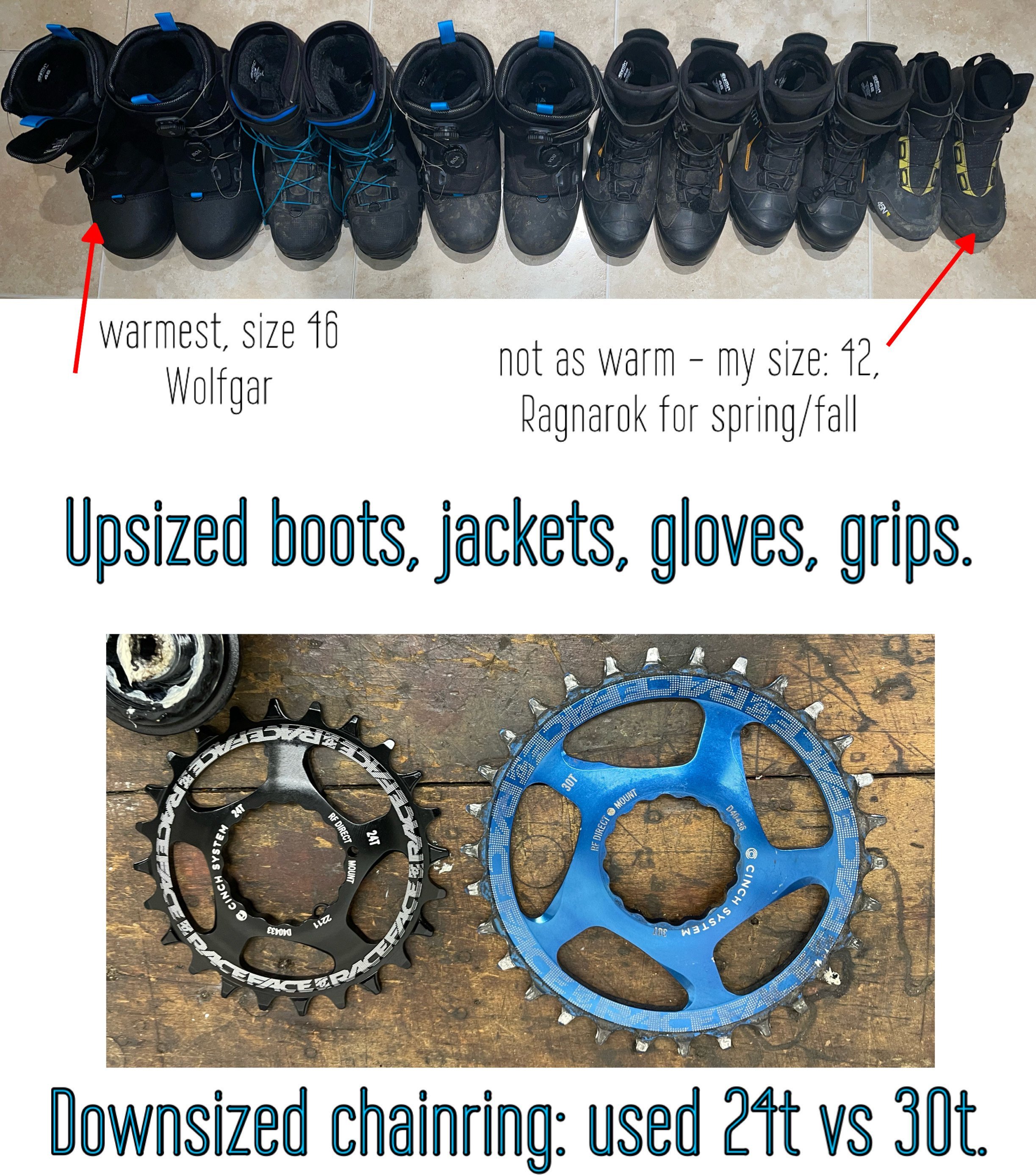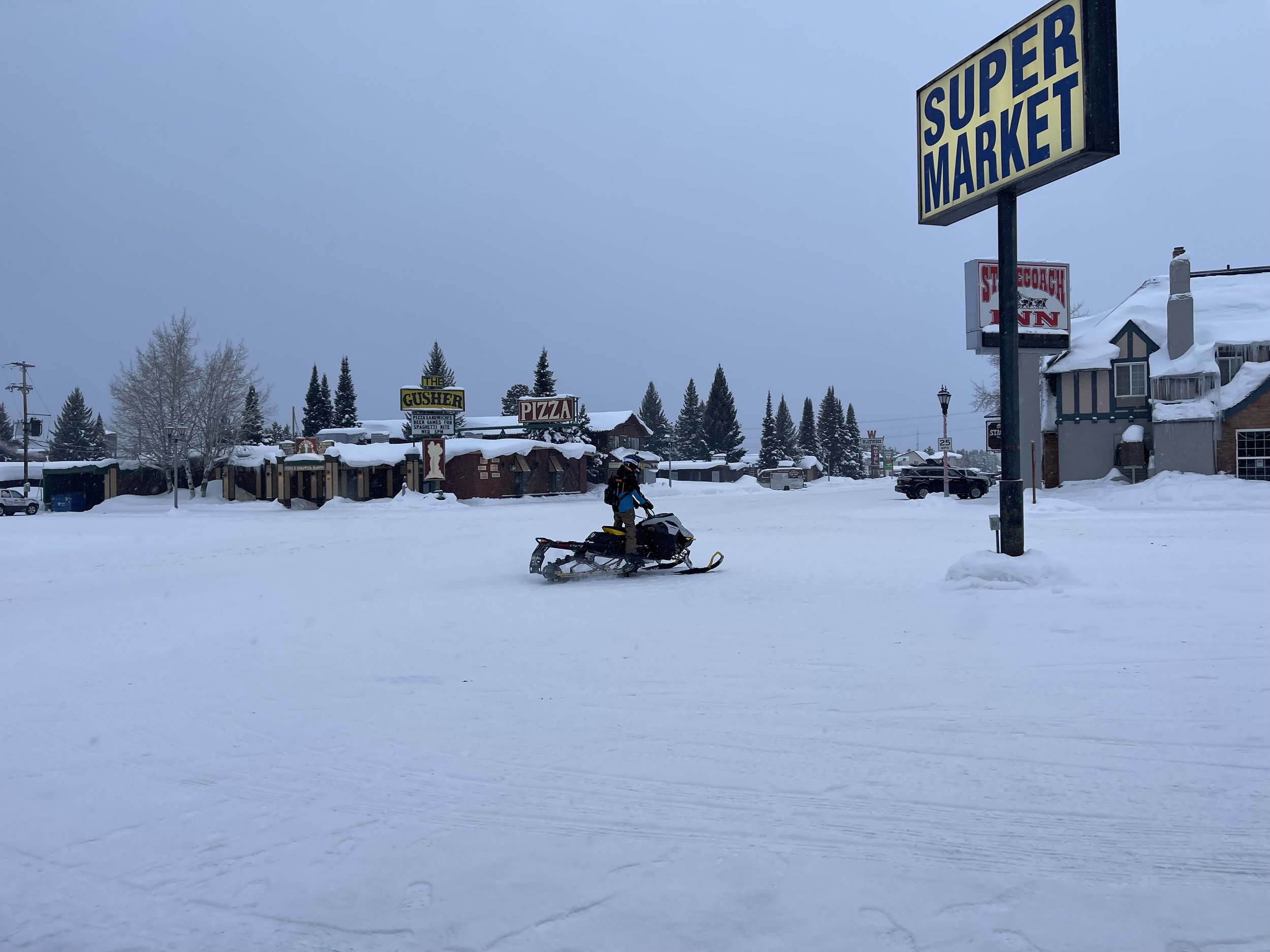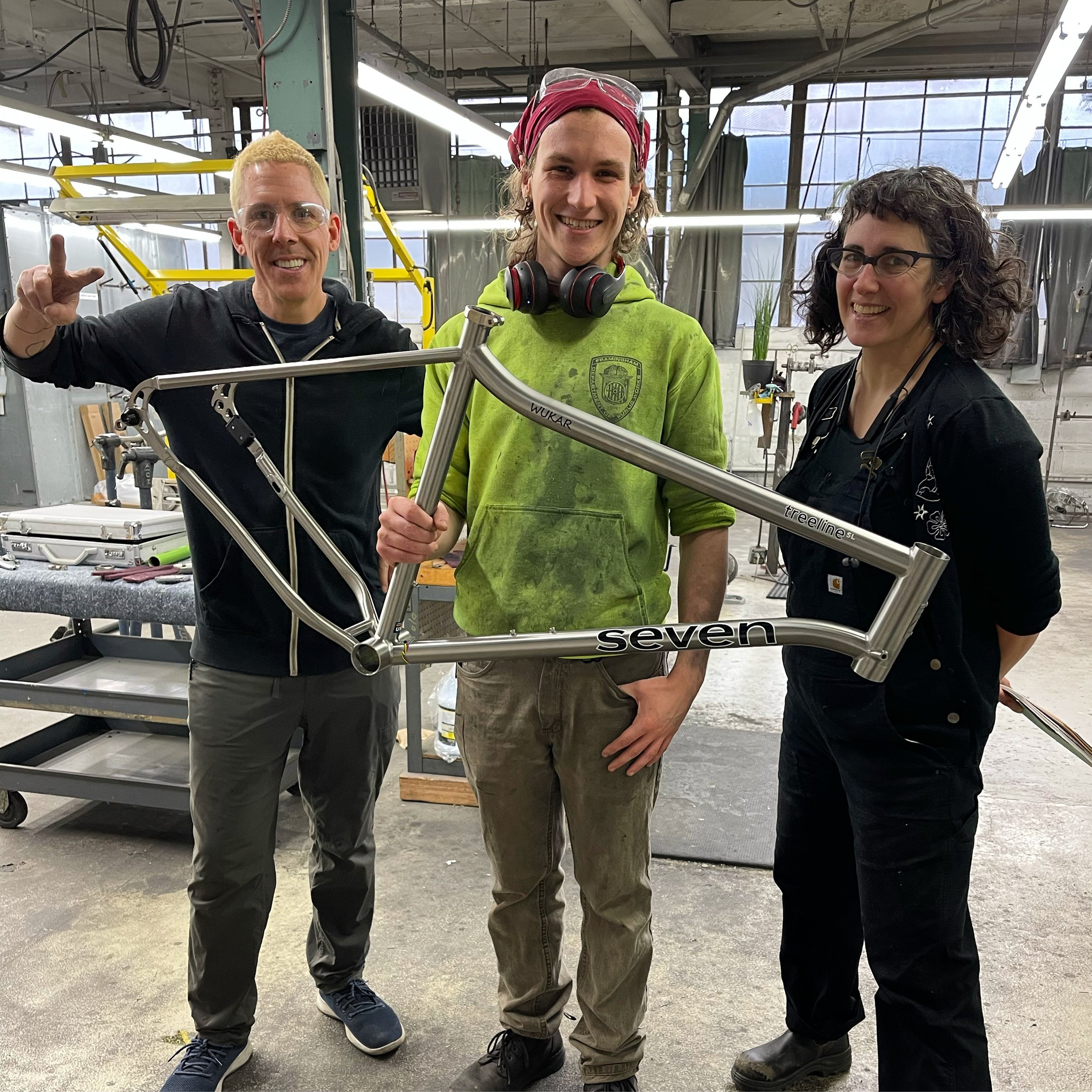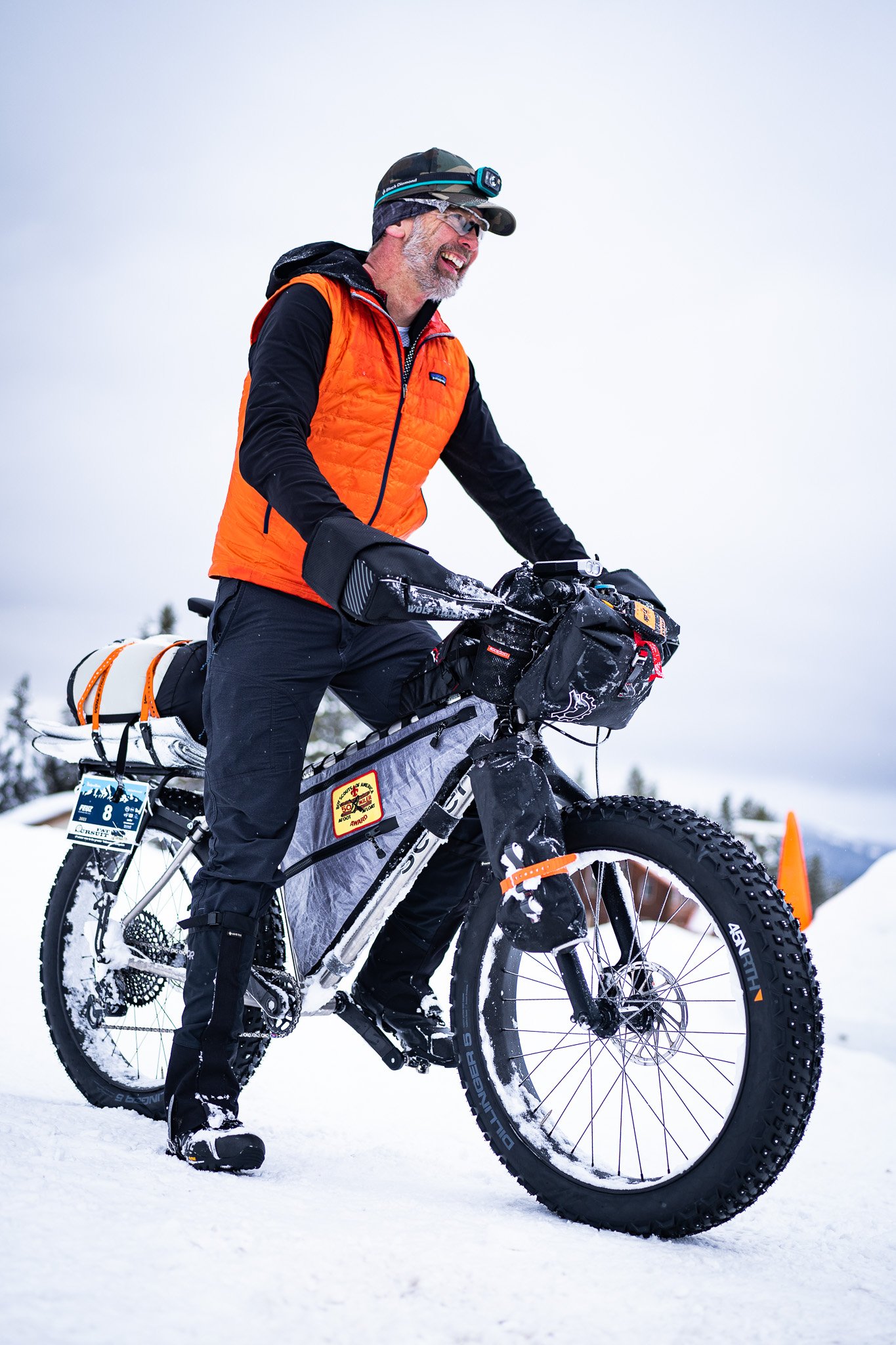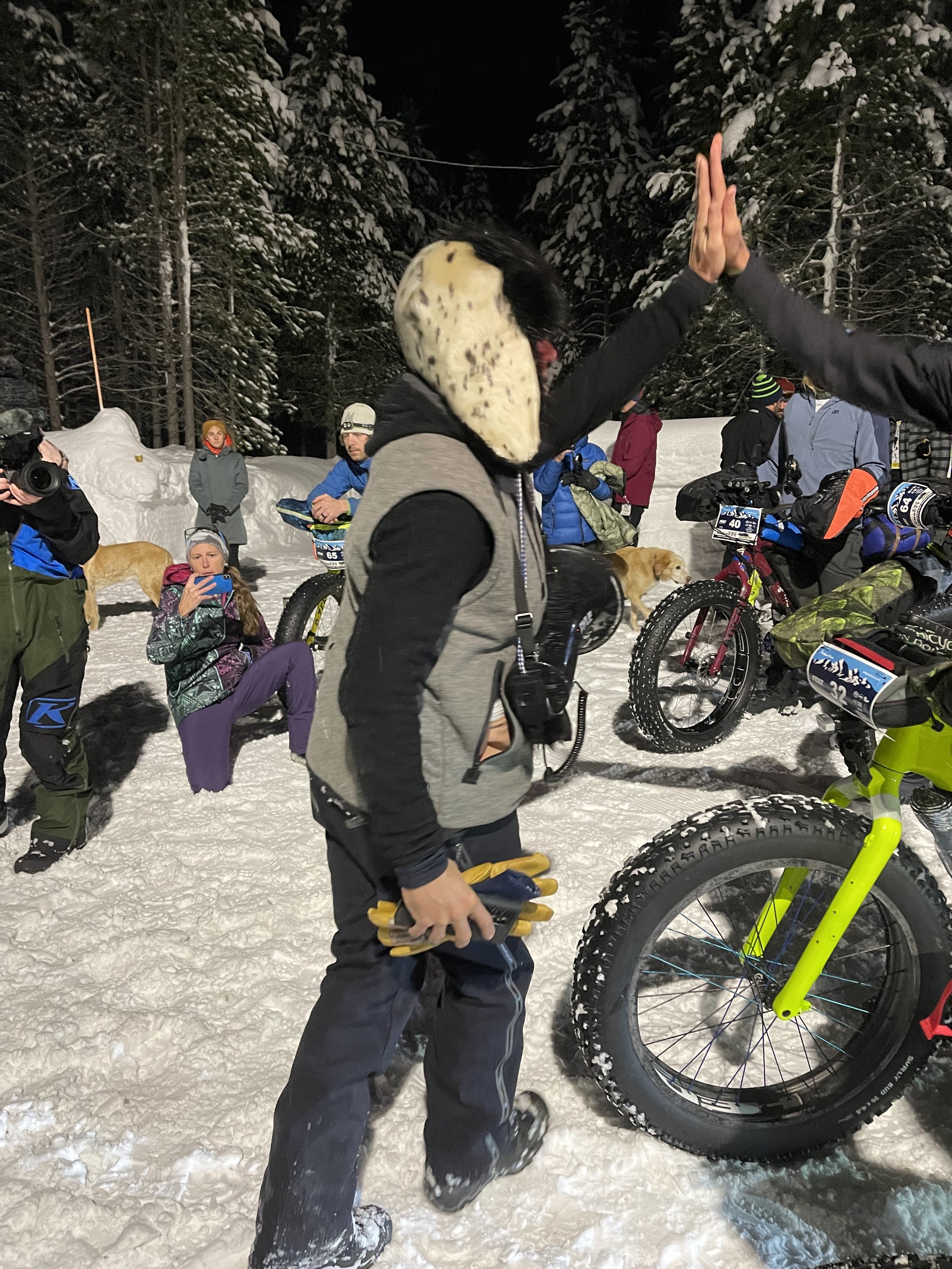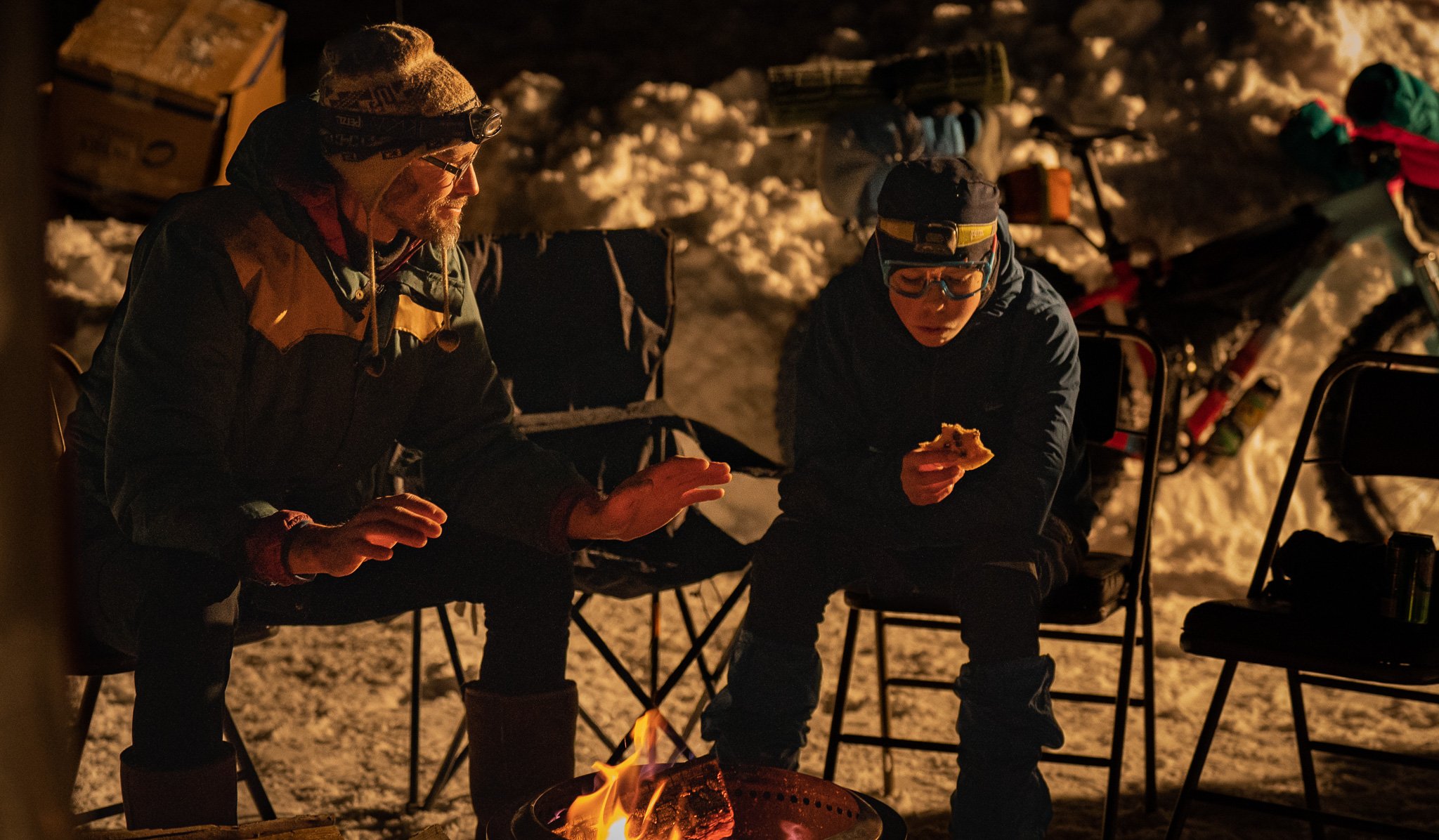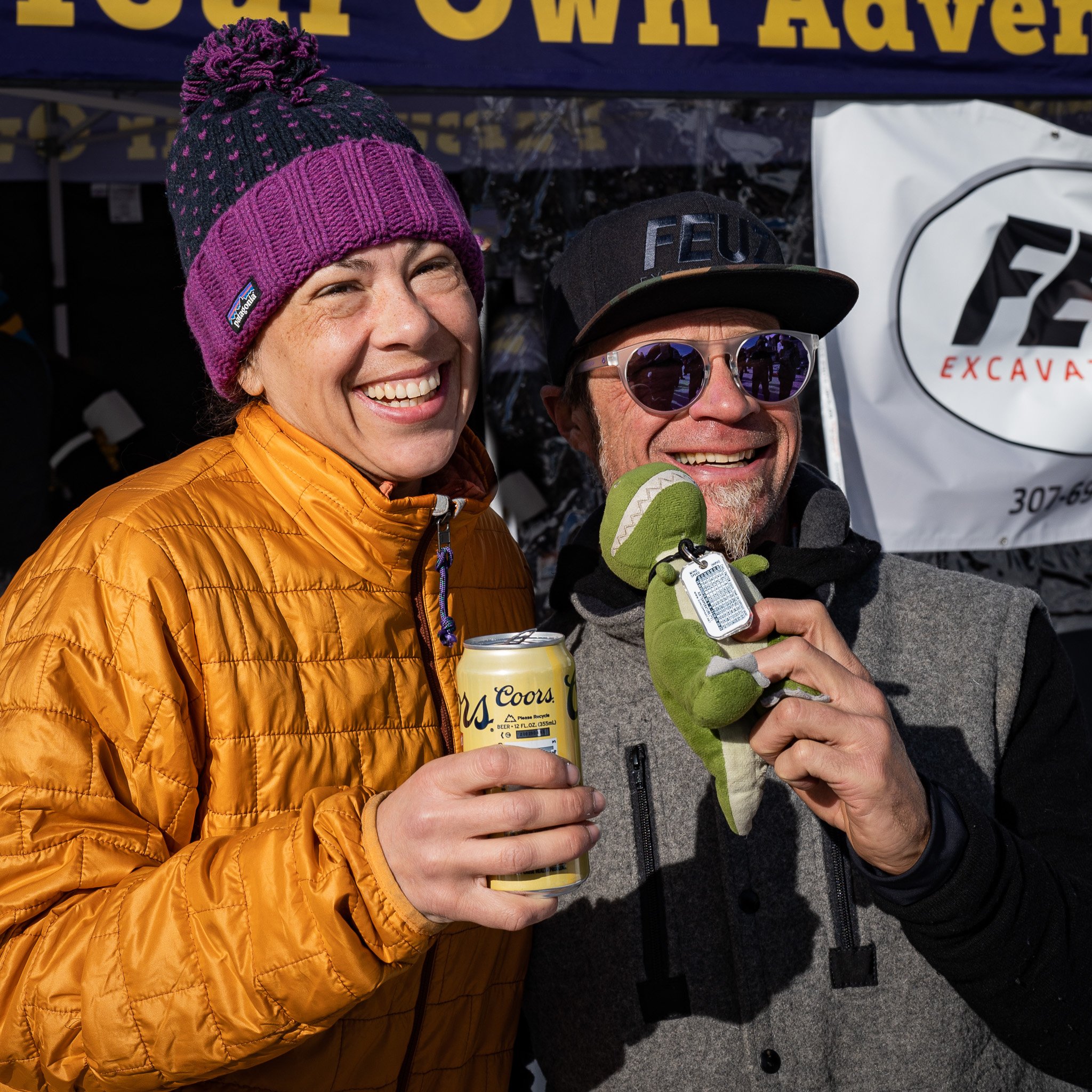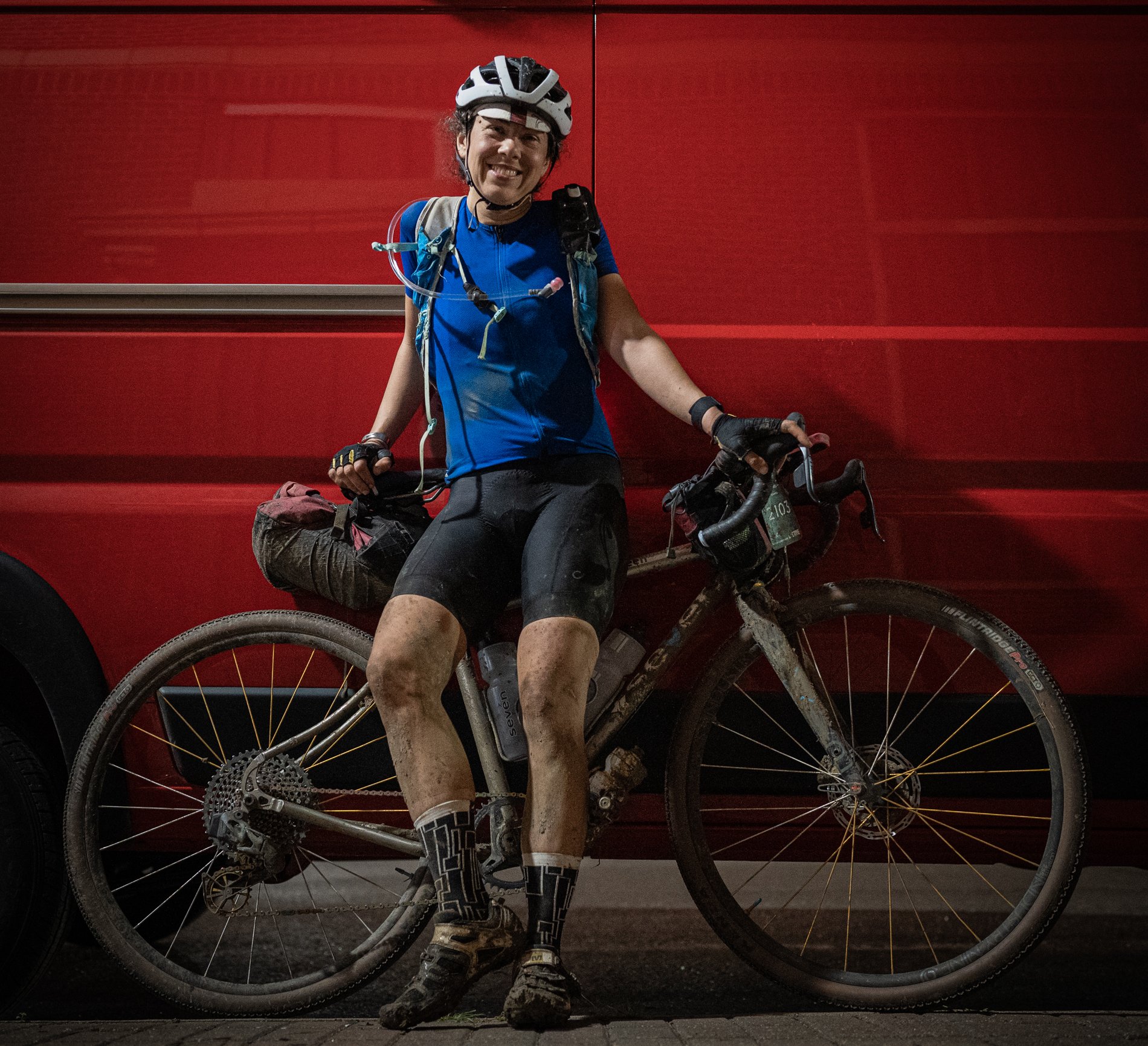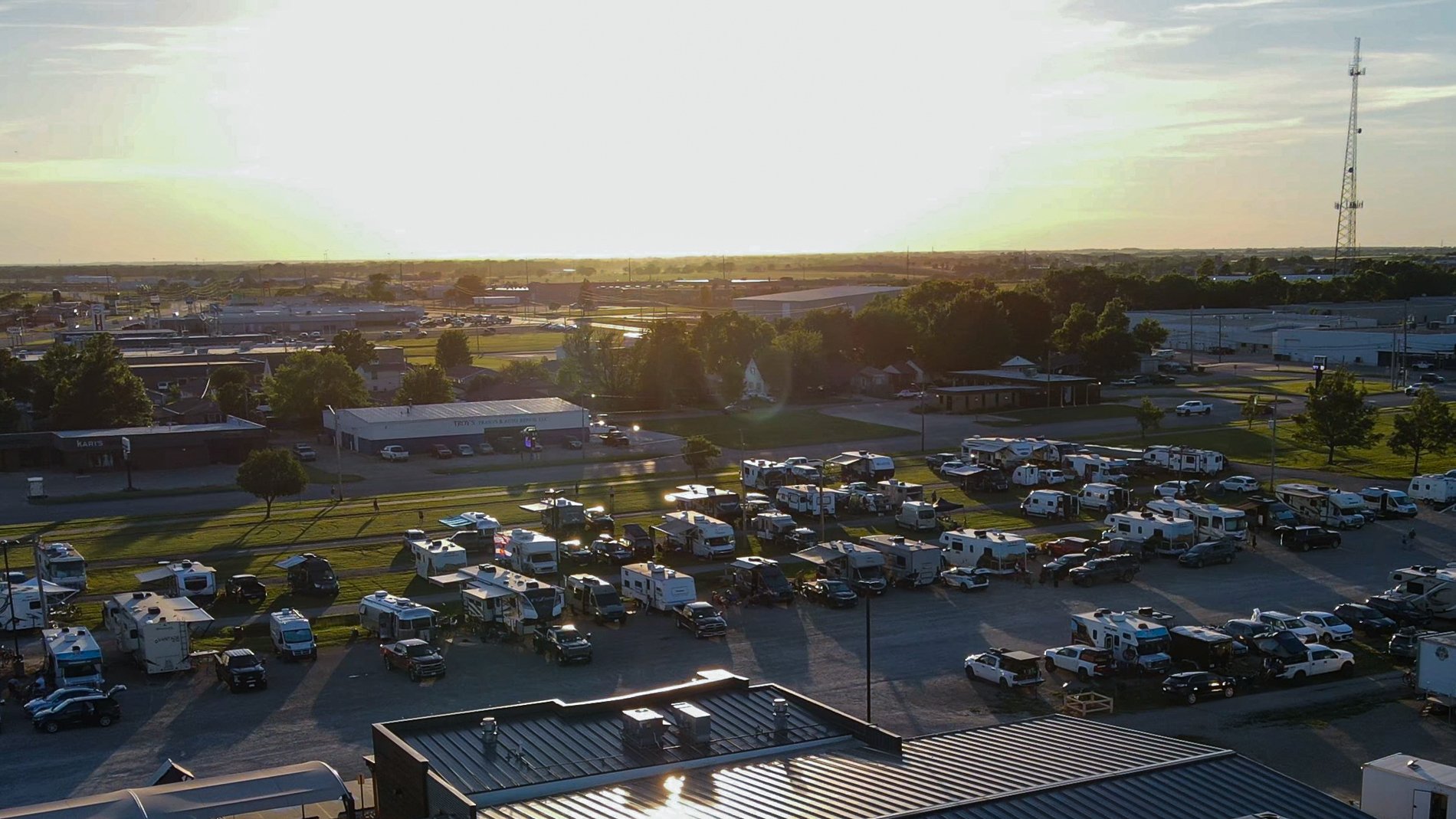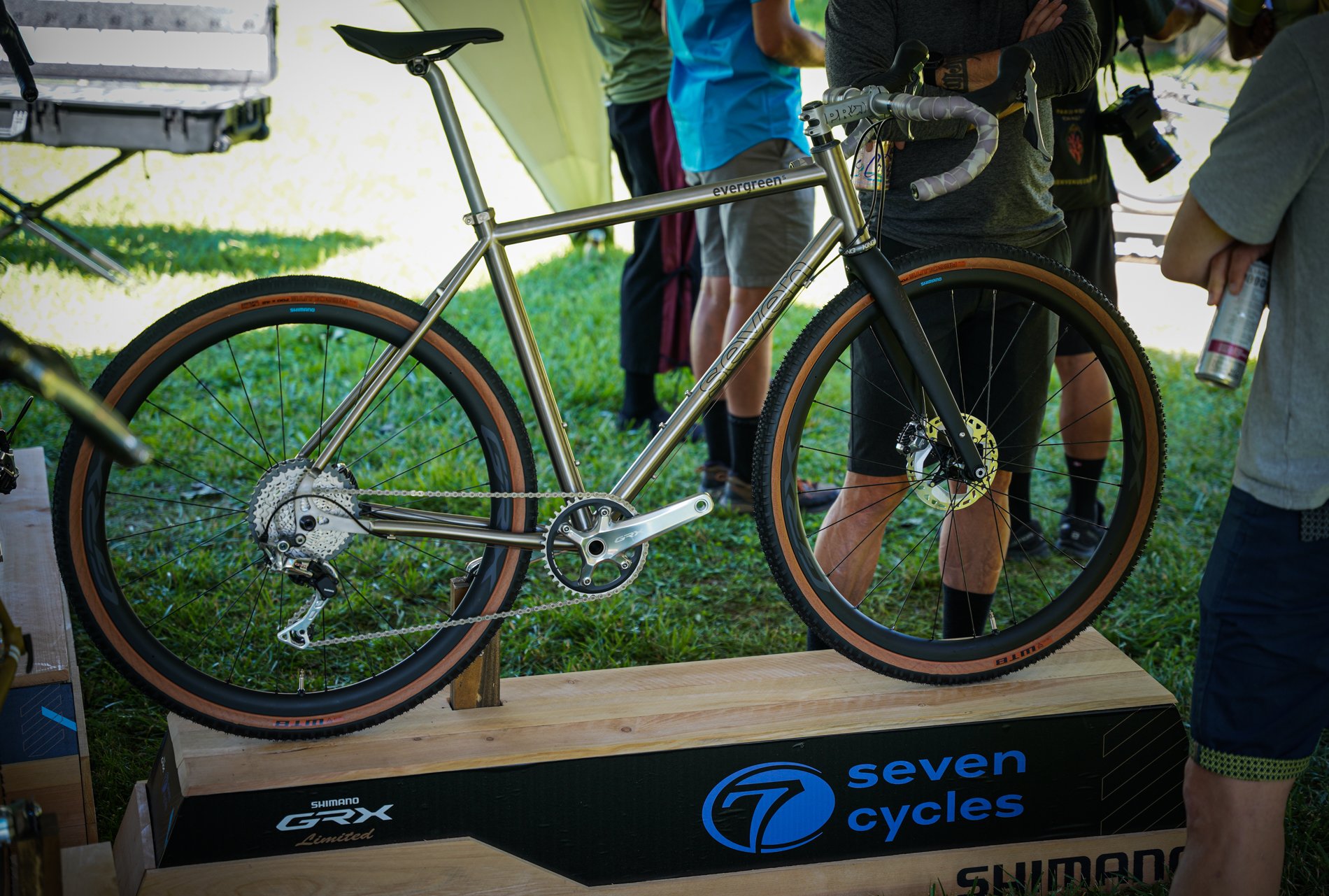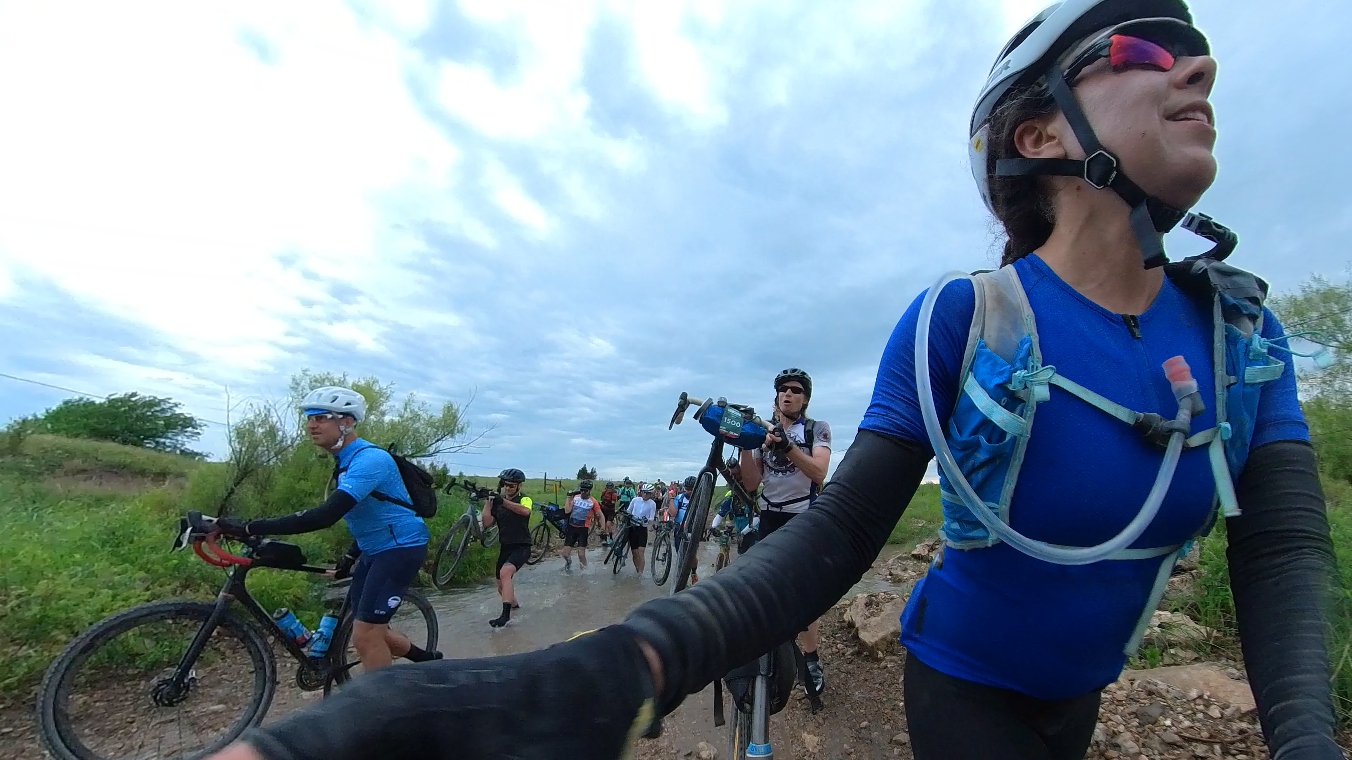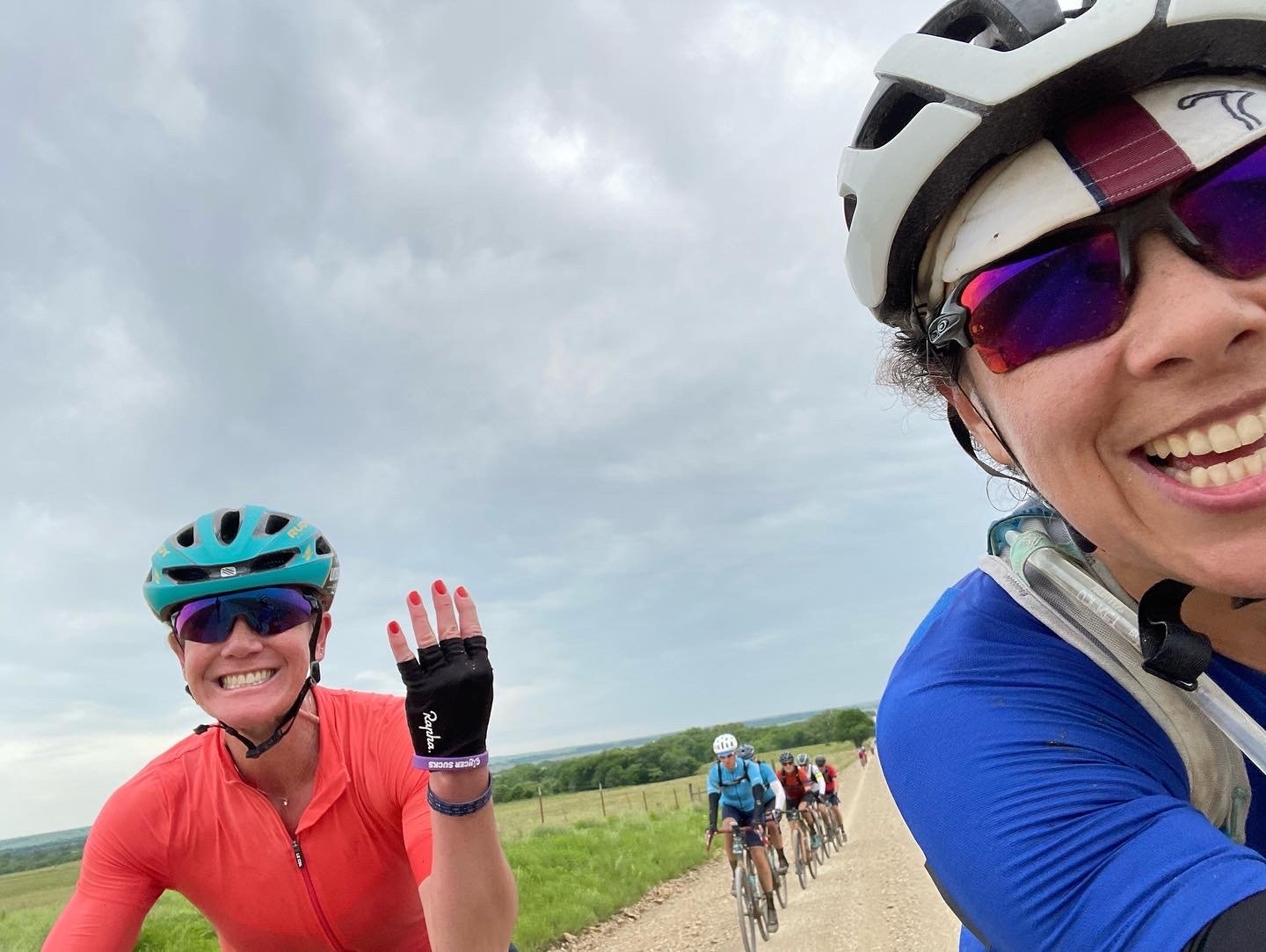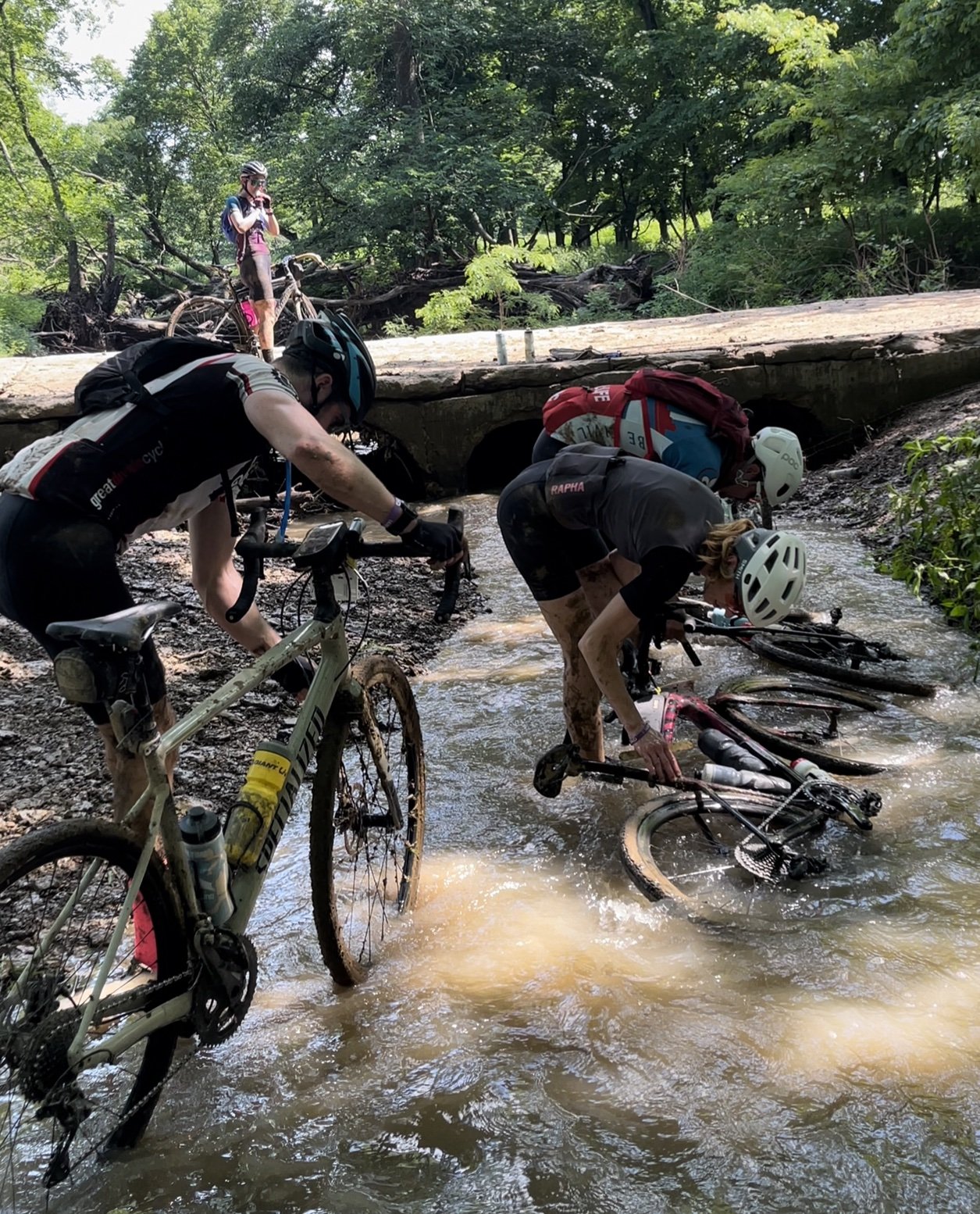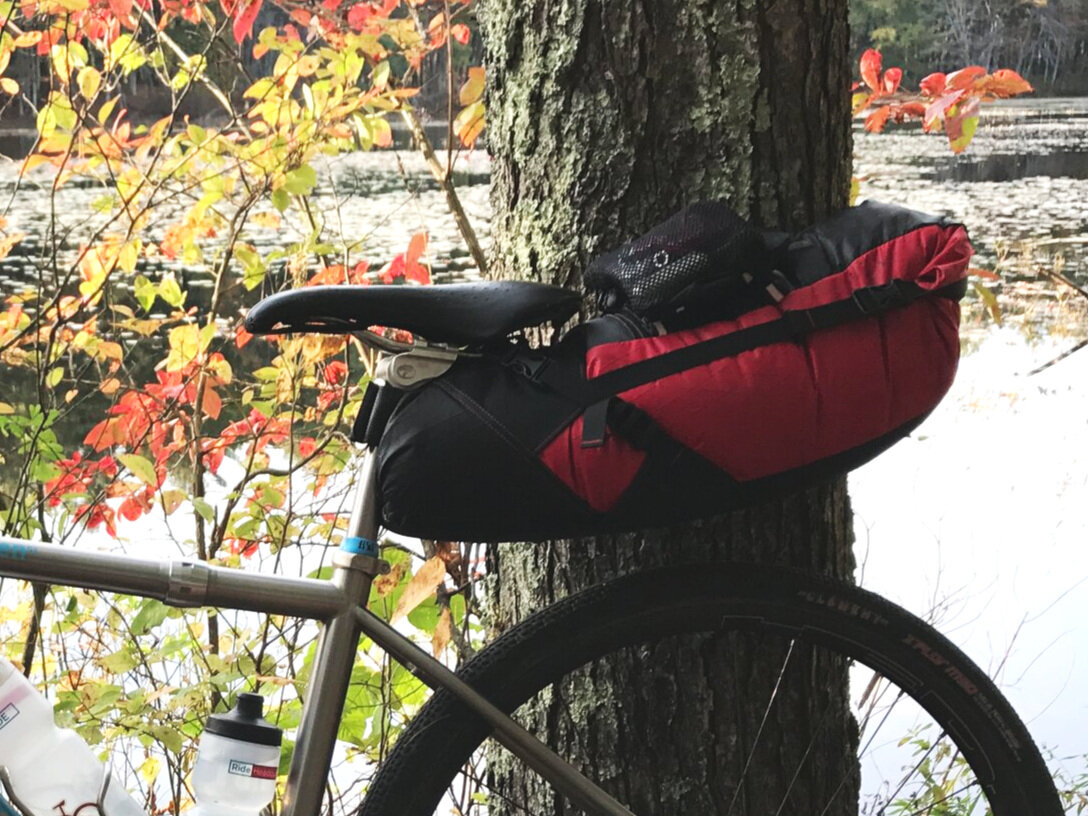…except the rear tire went flat again. Oh no! I spiraled to believing the tire had a big problem and it was going to be flat forever so I’d be walking the rest of the time. When I went to add air, I realized I hadn’t tightened the valve stem. Do I know better? Of course. This is what happens when the brain is tired.
So I added air yet again and the valve core came off with the pump. All of the air escaped. It takes a lot of pumps to get a fat tire full! Did it once again after tightening the valve core in there, and this time it held just fine. Whew! It wasn’t far to the trailer and CP 3 at this point so I didn’t have far enough to get warm again.
The trailer had big water containers and it was time for more water. I filled my bladder with about 3/4 L of what I thought was water but it came out milky yellow…hmmm. Bone broth! Then I found what was actually water and filled the rest of the bladder with that. I haven’t ever had bone broth on a ride and it’s my new favorite food. I don’t eat meat but I have no problem with this savory, nutrient-rich, creamy substance. Oh and it was warm!
Pulling out of the trailer, it felt like a cold, dark, still night. There’s no bivvying allowed after this since the last 11 miles of the race are called “a victory lap.” 11 miles sounds like nothing until one is sleep deprived and the body is beyond being out there for too long. My lights and everything with a battery started to suffer. It’s weird since the AAA lithium batteries aren’t supposed to be affected by sub zero temps, but my small flashing front light died. My headlamp did, too, but it was fine once I put it in my pocket and warmed it up. The rechargeable headlight showed signs of being close to the end of its life so I turned it to pulsing rather than low to save it as much as possible. It’s annoying to ride to a pulsing light! After it died ~45 minutes later, I rode by the light of the moon for awhile. It was bright enough to see just well enough. Finally, I pulled out another small backup light that I’d been warming in my jacket and put that on, set to pulsing since it was the very last one that I had. (I couldn’t remember where I stashed the last battery for my powerful headlight and was worried I had forgotten to bring it.)
The last section was really fun terrain and I liked it! I wish I could have been there in the daylight.
My derailleur stopped shifting. I was sure it was just too cold to work. Again, tired brain talking here. I had another full backup battery which I knew was with me and ready to go, but it didn’t occur to me to try it out. I just saw the snowy rear derailleur and decided it had frozen up. This is crazy to think since my bike worked absolutely fine at -9 degrees after a night of sleeping outside with me so of course at 6 to 9 degrees, the battery is going to be fine. So there I was stuck in my 42 tooth cog paired with the 26t chainring for the rest of the race on a course that had almost no climbs left. I really enjoy finishing races strong, coming in fast (er, relatively fast) so the super spinning I was doing didn’t cut it and I couldn’t speed to the finish line even though my legs told me they still had something left to give. How much? Will never know!
For those who are thinking I’m not so smart for having an electronic shifting bike, I saw plenty of people have issues with mechanical shifting bikes when things freeze in both the shifter and derailleur so all systems will have issues in the cold. I was just too tired to do the logical thing that I would have advised any group rider to do on a typical ride.
It was about two hours prior to the finish (43 hours in) that I started to feel pressure on my saddle, my shoulders got sore from the weight of the hydration pack, and knees felt a bit creaky. Going this long without any physical discomfort was a major win. Everything is much more dialed now than 2 years ago.
The finish (4:05am Sunday) was the best! Rob was there taking photos and there to welcome me back. I am so lucky he was there, his presence and support means the world.
Jay and a volunteer were there to proctor the water boil test and it looked like they had been out there for the entire night. Jay was there for every single finisher. And because he had the water boil at the end, that meant he interacted and had conversations with everyone who had energy left to chat. It was the best way to end the race and be able to say THANK YOU to Jay.



























